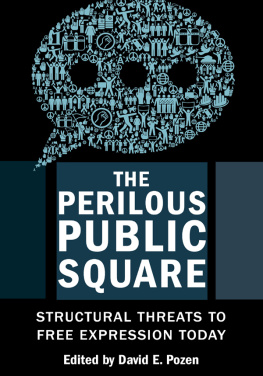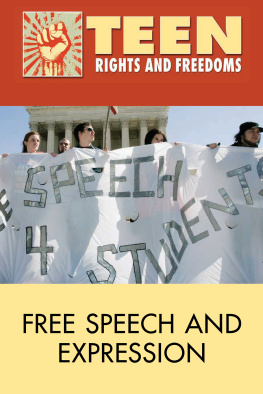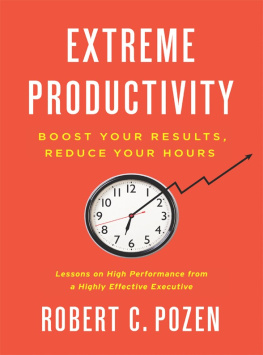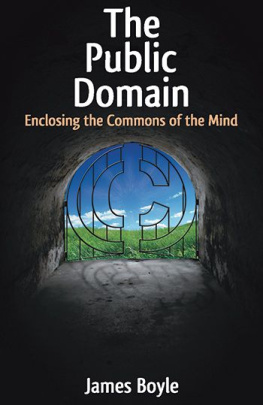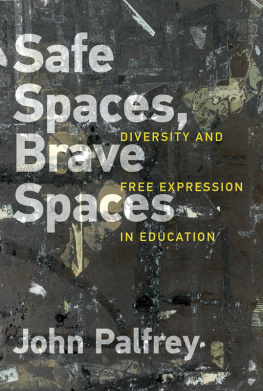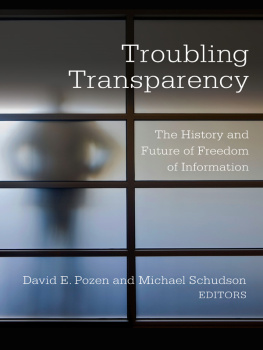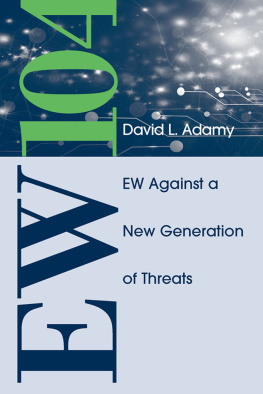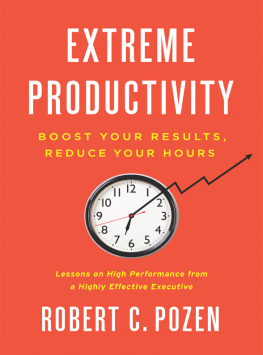Table of Contents
THE PERILOUS PUBLIC SQUARE
ABOUT THE KNIGHT FIRST AMENDMENT INSTITUTE
The Knight First Amendment Institute was established in 2016 by Columbia University and the John S. and James L. Knight Foundation to safeguard free expression in the shifting landscape of the digital age. The Institutes litigation, research, and public education efforts focus on new manifestations of longstanding threats to freedom of speech and the press, and the many novel challenges arising from evolving technologies.
THE PERILOUS PUBLIC SQUARE
STRUCTURAL THREATS TO FREE
EXPRESSION TODAY
Edited by David E. Pozen
COLUMBIA UNIVERSITY PRESS NEW YORK
COLUMBIA UNIVERSITY PRESS
Publishers Since 1893
New York Chichester, West Sussex
cup.columbia.edu
Compilation copyright 2020 Columbia University Press
All rights reserved
E-ISBN 978-0-231-55199-1
Library of Congress Cataloging-in-Publication Data
Names: Pozen, David E, editor, author. | Knight First Amendment Institute at Columbia University.
Title: The perilous public square : structural threats to free expression today / edited by David E Pozen.
Description: New York : Columbia University Press, 2020. | This volume grew out of, and includes, a series of papers entitled Emerging threats published from September 2017 to October 18 at the website of the Knight First Amendment Institute at Columbia UniversityECIP Introduction. | Includes bibliographical references and index.
Identifiers: LCCN 2019048989 (print) | LCCN 2019048990 (ebook) | ISBN 9780231197120 (cloth) | ISBN 9780231197137 (paperback) | ISBN 9780231551991 (ebook)
Subjects: LCSH: Freedom of expressionUnited States.
Classification: LCC KF4770 .P47 2020 (print) | LCC KF4770 (ebook) | DDC 342.7308/53dc23
LC record available at https://lccn.loc.gov/2019048989
LC ebook record available at https://lccn.loc.gov/2019048990
LC ebook record available at https://lccn.loc.gov/2019051352
A Columbia University Press E-book.
CUP would be pleased to hear about your reading experience with this e-book at .
Cover design: Julia Kushnirsky
Cover Image: istockphoto
For my parents
CONTENTS
David E. Pozen
Tim Wu
Geoffrey R. Stone
Rebecca Tushnet
David E. Pozen
Frederick Schauer
Jelani Cobb
Mark Edmundson
Suzanne B. Goldberg
Rachel A. Harmon
David E. Pozen
Heather Whitney
Eric Goldman
Genevieve Lakier
Frank Pasquale
David E. Pozen
Olivier Sylvain
Danielle Keats Citron
James Grimmelmann
Daphne Keller
David E. Pozen
Jack Goldsmith
David Kaye
Nani Jansen Reventlow and Jonathan McCully
David E. Pozen
Matthew Connelly
David S. Ferriero
Elizabeth Goitein
Kirsten Weld
David E. Pozen
Kate Klonick
Enrique Armijo
Amy Gajda
Sarah C. Haan
David E. Pozen
Everyone seems to agree: we live at a time when free speech is under attack. But under attack from what?
Justice Samuel Alito declined to elaborate on that claim in his June 2019 concurring opinion in Iancu v. Brunetti. Presumably he did not have in mind the 73-year-old trademark registration statute that was at issue in the case. More likely, he was alluding to what many critics, especially though not exclusively on the political right, describe as a culture of close-mindedness on university campuses and in elite media circles. According to this account, American students, professors, and pundits are increasingly challenging the value of open inquiry and resorting to tacticsfrom obstreperous protests to speaker disinvitations to demands for trigger warnings and safe spacesthat stifle debate and enforce the prevailing intellectual and ideological orthodoxy.
Meanwhile, many other critics, especially though not exclusively on the political left, offer a very different vision of what imperils free speech today. According to this account, the Supreme Courts conservative majority has weaponized or Lochnerized the Constitutions free speech guarantee over a series of rulings to undermine the First Amendment interests of ordinary workers, voters, and consumers while protecting the privileges of well-heeled corporations and donors (to say nothing of pornographers, neo-Nazis, and other controversial beneficiaries of prior precedents). The result is an ever more plutocratic expressive order that elected officials can do little to fix. Justice Alitos lament is highly ironic on this view, for he is not so much the victim of an attack on free speech as a leading perpetrator.
Both of these critiques raise important issues. They draw on different strands of liberal theory as well as different sources of evidence, and they have generated passionate debate. Nevertheless, they capture only a slice of the threats currently facing our system of free expression.
Well beyond Americas campuses and courthouses, a set of political, economic, social, and technological developments have been raising profound challenges for this system in recent years. These developments range from the rise of authoritarian nationalism, fake news, and national security secrecy; to the decline of print journalism and of trust in experts; to increasingly subtle forms of governmental and nongovernmental surveillance and speech control made possible by digital platforms. We might call these threats structural insofar as they arise not only or primarily from discrete decisions or events but also from broad changes in the means and forms of mass communication, collective organization, and capitalist production.
The First Amendment literature has confronted structural problems before. Although much of the literature has focused on defining and defending the rights of specific speakers, a distinguished line of authors have widened the analytic lens and asked how to engineer a fairer, fuller, freer expressive environment for everyone
that are their partial cause and consequence, have exacerbated concerns about the coherence of public discourse and its capacity to sort fact from fiction, much less to foster good-faith deliberation.
All of these developments, and more, have contributed to a powerful collective anxiety about the state of free expression. Even as the legal rights of Americans to speak their minds have arguably never been stronger, and overt government censorship never been weaker, the fear that there is nonetheless something deeply amiss with our speech system continues to mount.
Origins and Goals of This Volume
This volume responds to that fear and tries to throw some light on it. It does so by bringing together leading legal thinkers to help identify and investigate newly arising or intensifying structural threats to the system of free expression. Although the contributors are mostly based in the United States and mostly concentrate on U.S. laws and institutionsa parochialism endemic to First Amendment scholarshipalmost all of the threats they address have global implications, as their pieces make clear.
Substantively, this volume grows out of a conviction that the structural dimensions of free speech deserve ongoing solicitude and study, inasmuch as truly free speech requires a mix of legal, material, and cultural ingredients that collectively enable effective voice and participation throughout society. These ingredients, moreover, may change over time as society changes. Safeguarding the system of free expression is a dynamic challenge. The overarching goal of the volume is to call attention to a number of particularly important structural threats to the current system and, in so doing, to begin to move these matters from the periphery toward the center of the free speech conversation.



